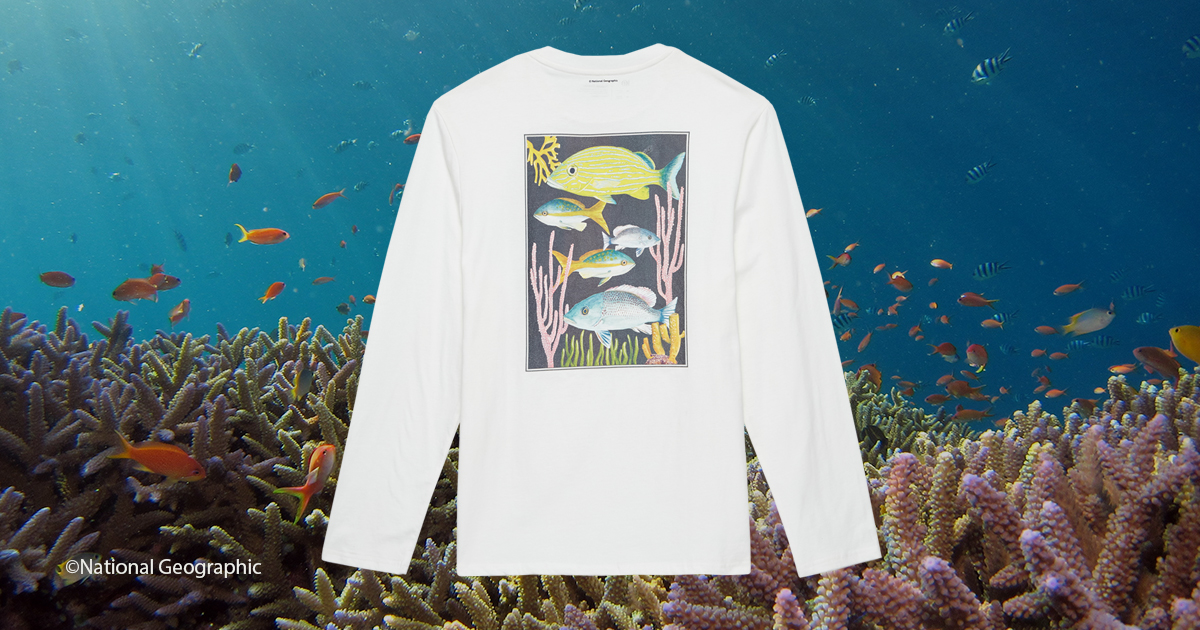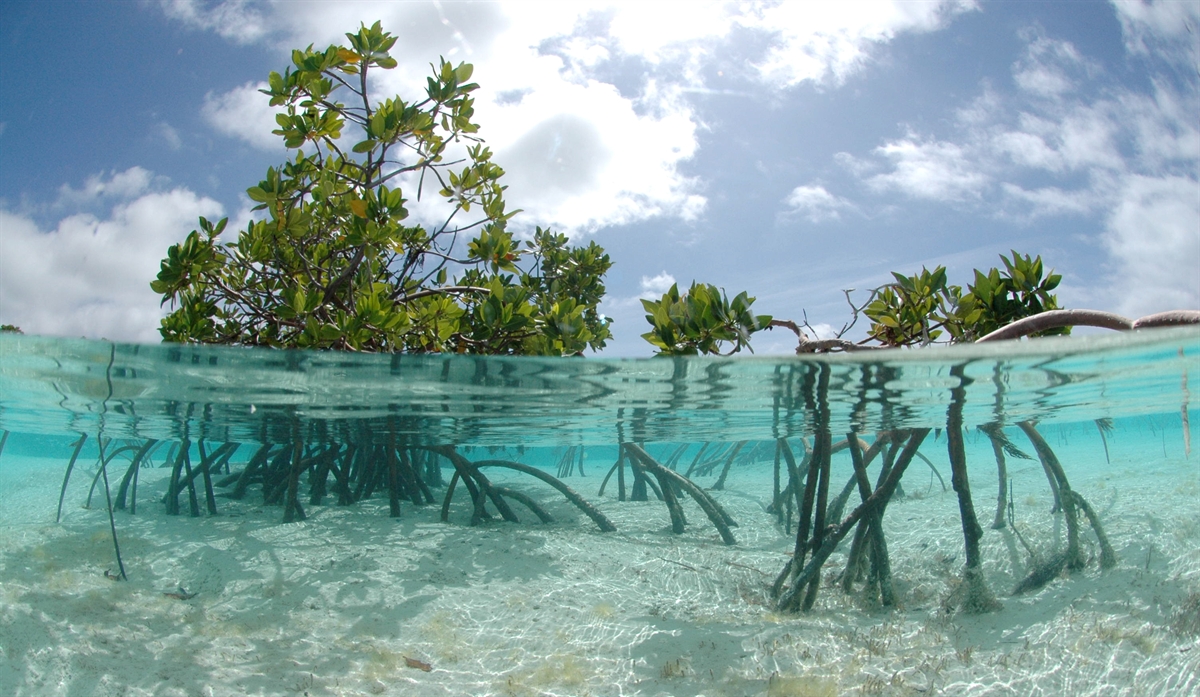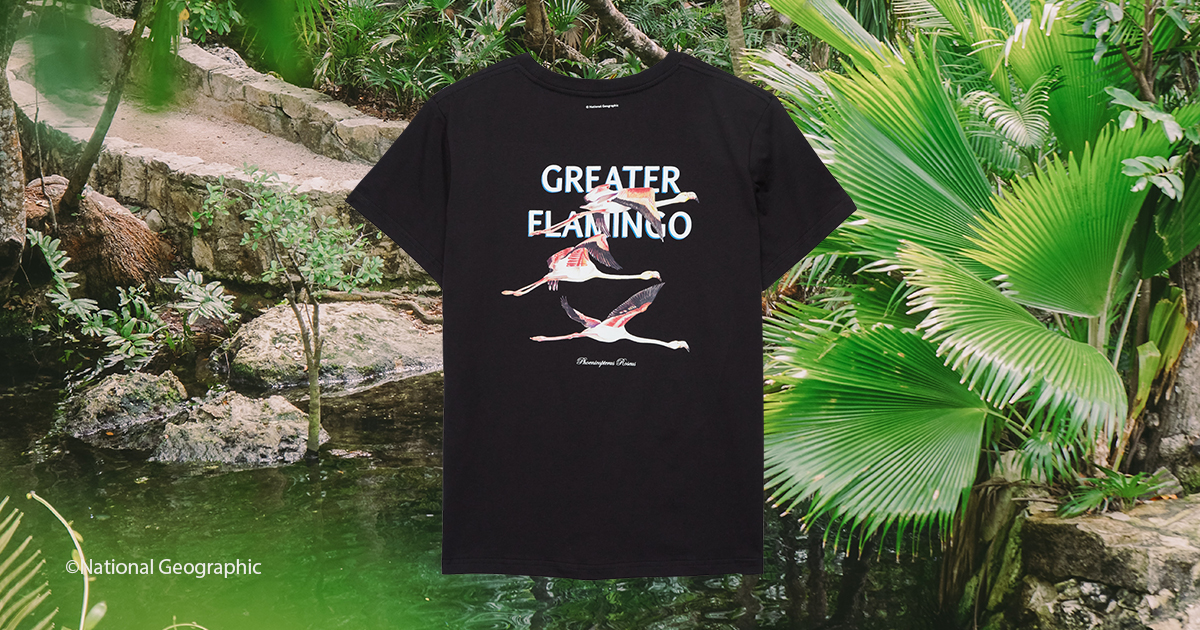In case you missed it, we just launched a new collection in collaboration with National Geographic. Alongside this global leader in conservation, we’re on a mission to protect the planet we all call home. And what better way to do this than by planting trees and protecting the ecosystems that are the foundation of a healthy, thriving planet?

Featured: Ungendered Mangrove Portal T-Shirt
Species Spotlight
The hand-painted designs for this collection feature just a few of the countless species that benefit from the trees your purchase helps plant. In this blog, we’re getting to know two of these creatures better and exploring how the mangrove tree plays an important role in both their habitats.
The Mangrove Snapper
The first animal that calls the mangrove forest home is aptly known as the mangrove snapper. Found in warm coastal waters from Florida to Brazil and across the Gulf of Mexico, the mangrove snapper is at home among the seagrass beds and intricate root systems of mangrove forests. This structured habitat creates a safe nursery for juveniles with a rich food source and protection from predators. Once the mangrove snapper matures, the mangrove roots aid this opportunistic hunter as it nocturnally preys on small fish, shrimps and crabs.

Featured: Ungendered Mangrove Snapper Longsleeve
Interesting Fact: This species of snapper is known to spawn during full moon nights when the females lay thousands of eggs at a time. Once hatched, the average lifespan of the mangrove snapper is around 21-28 years.
In addition to creating a valuable nursery and habitat for the snapper and its prey, mangrove forests provide important shoreline protection for the ecosystems they’re found in. In the face of increasingly intense weather due to climate change, they protect shorelines from damaging storms and hurricanes. Mangroves also help prevent erosion by stabilizing sediment with their tangled root systems, maintain water quality and clarity, filter pollutants, and trap sediment from the land.

The Greater Flamingo
Leaving the mangrove snapper’s coastal home, you can find the next creature featured in this collection residing in the warm, watery regions on many continents, including Asia, Africa and southern Europe. The largest living species of flamingo, the greater flamingo, makes its home in environments like estuaries, saline or alkaline lakes and mudflats.
Greater flamingos congregate in flocks on these shallow water beds to breed and hunt. Dining on a diet of small fish and shrimplike crustaceans and microscopic algae (which gives them their signature pink colour), greater flamingos use their webbed feet to stir up the water then duck their beaks below the surface to catch their prey.

Featured: Women’s Greater Flamingo Crew T-Shirt
Interesting Fact: The greater flamingo migrates at night. They can travel approximately 600 km (373 miles) in one night at about 50 to 60 kph (31-37 mph).
At our planting sites in the Mahabana Estuary in Madagascar, we see a direct link between the success of greater flamingo populations and the presence of healthy mangrove forests. When the mangrove forests along the estuary were destroyed almost a decade ago, the mudflats washed into the ocean. With their prey gone and habitat impacted, the flamingo population disappeared.
But after initiating restoration efforts and planting over 70 million mangrove trees, both the greater flamingo and their prey have returned to the estuary. The return of mangrove forests has also benefited local communities, helping support local fisheries and protecting coastal communities from hurricanes, tsunamis and floods in the wake of climate change.
These are only two of the countless species that benefit from the different trees your purchase helps plants. When we plant trees, we help conserve this incredible habitat, not only for local wildlife and the ecosystem around the world, but for humankind as a whole.
Shop the National Geographic x tentree Collection and help create positive change for the planet.
Keep Reading
Illustrating National Geographic: Meet The Artist
By planting ten trees for every item you purchase, it’s our mission to plant 1 billion trees by 2030. Head to our website to learn more and begin your planting journey with 10% off.

